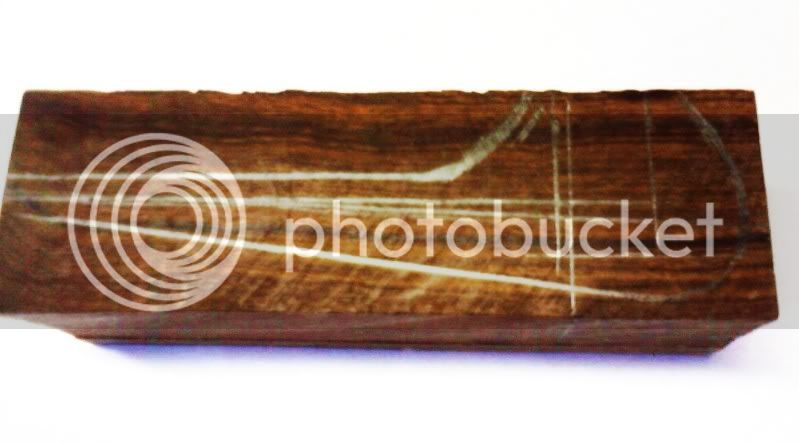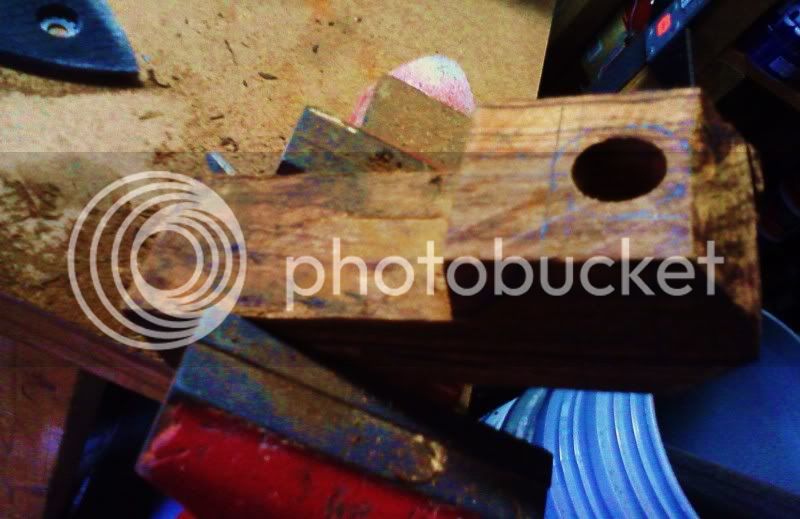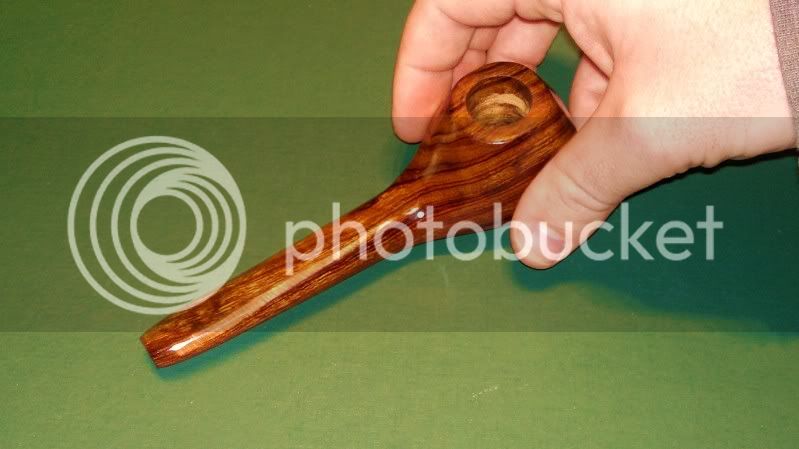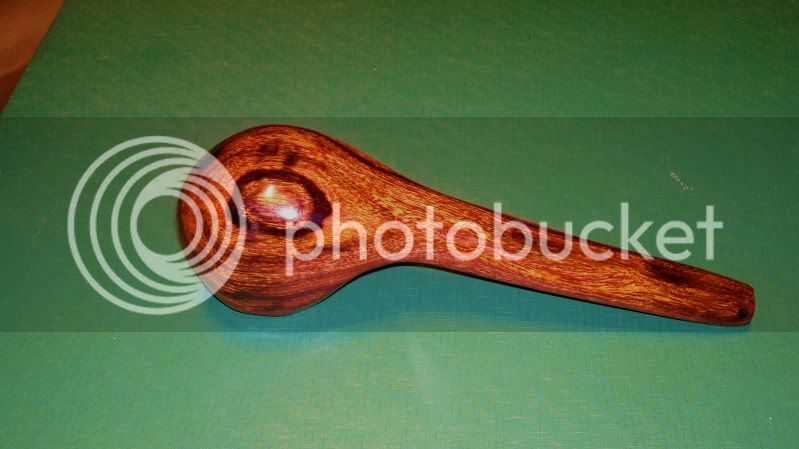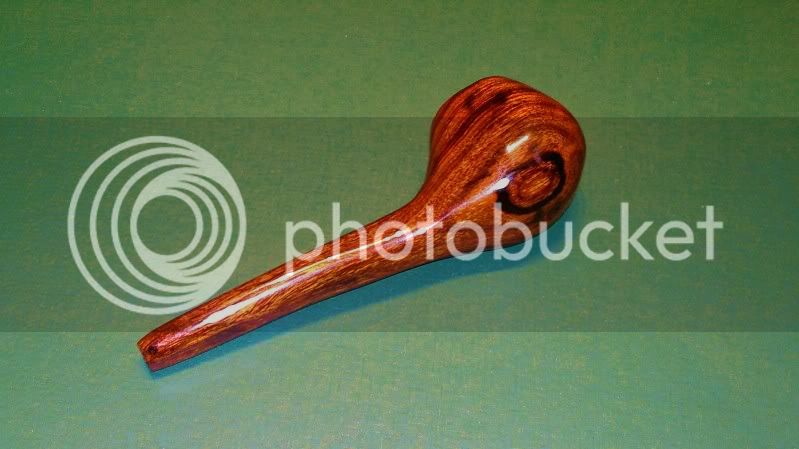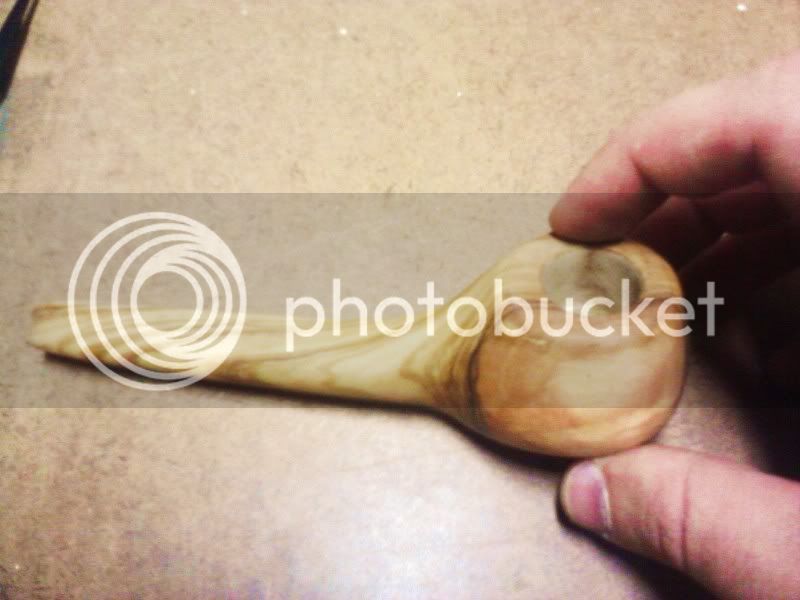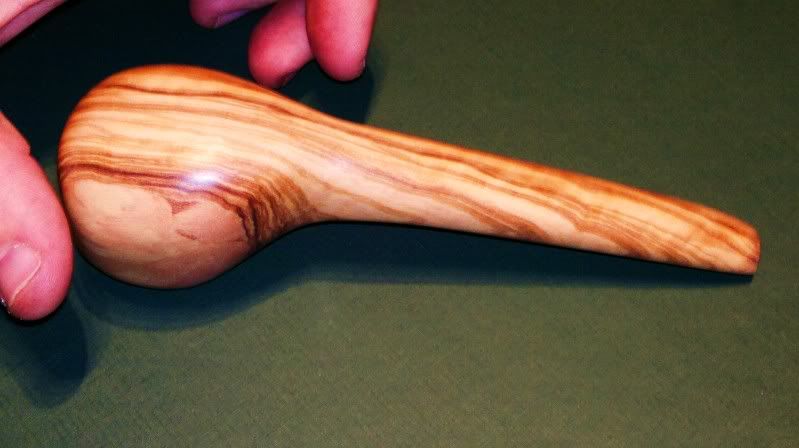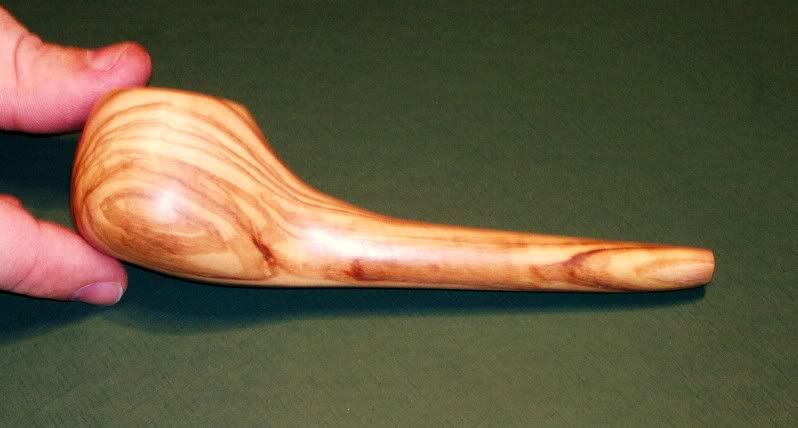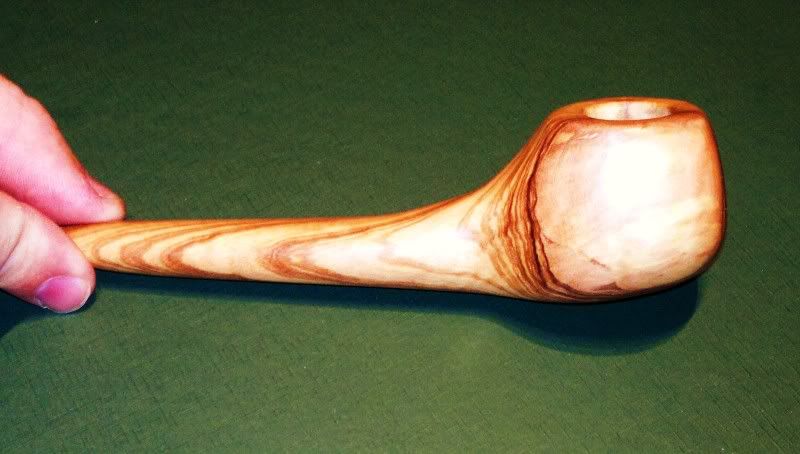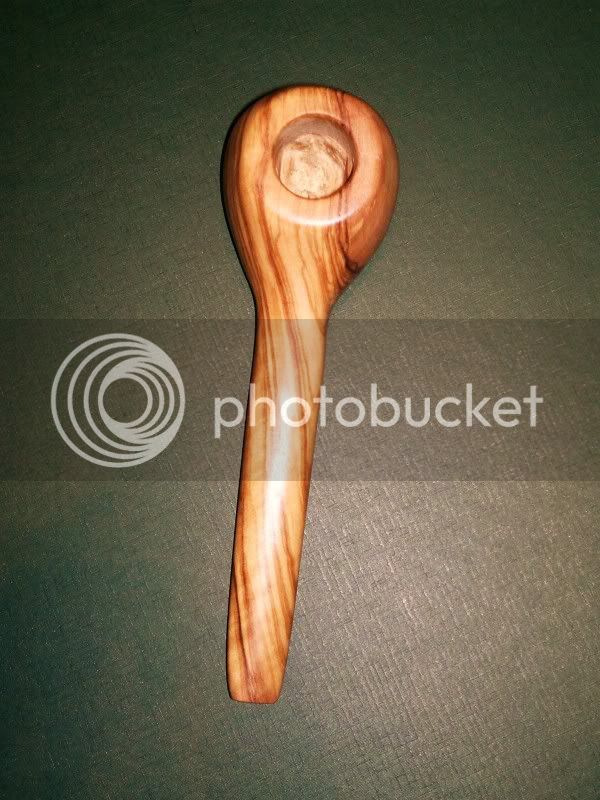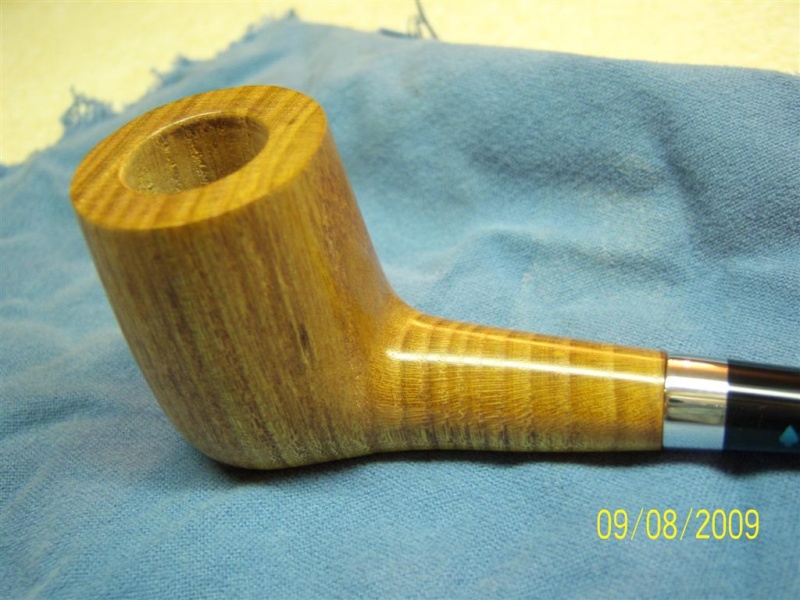Why are one piece pipes not as common and what are the drawbacks?
I'll speculate a little here with you. All are possible:
* Briar is expensive. Finding pieces to cover that much real estate would be pricey (and hard to accomplish).
* Breakage. Bust a one-piece pipe at the stem, it may be its death. Break a stem in a traditional briar, you can have it fixed. You might be able to salvage a one-piece pipe with a broken stem with a lucite/vulcanite one--then you wouldn't have to worry about this speculation. Hehehehe.
* Tooth damage (to the pipe, not the tooth). Again, easier to replace/refinish/refurbish a bit than chewing on a wood one. Ever see a bitten pencil?
* Moisture damage. Briar to be smoked needs to be dry. Slobbering on a wood bit would likely impart flavor and unintended interaction with the wood at a minimum, possibly swelling and cracking if the smoker is a real drooler.
* Mouth comfort. Bits are shaped the way they are for a reason--harder to do and keep structurally intact with wood. Also, pretty inconvenient to have a pipe unable to be held in the mouth very easily!
* Cleaning. Having a breakaway between the bowl and stem makes it easy to really give a proper scrub
* Tradition. The look and method of making these pipes has been developing for a long time, and for good reason: they're very functional, and can be very attractive. There's nothing finer than the craftsmanship of a pipe made by hands of a master (well, to a pipe smoker/collector, anyway... :lol: )
All things considered, there's no absolute way to make a pipe, but I think there's a good, informed reason why the system of pipe we know it today is in place--they're hardy, relatively easy to make (but hard to make well), easy to maintain and provide an excellent smoke. It's a tough act to improve upon, and boy, has it been tried.
8)
